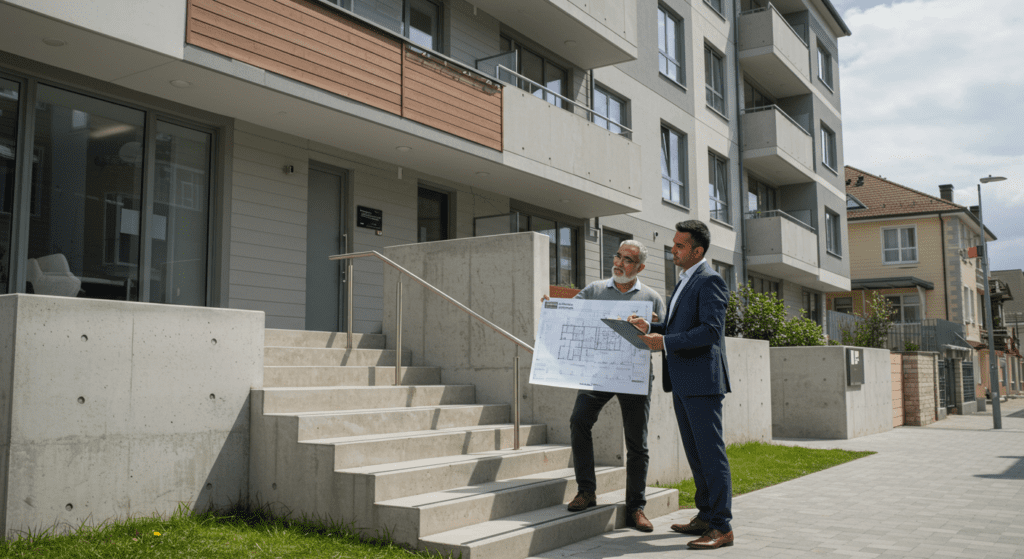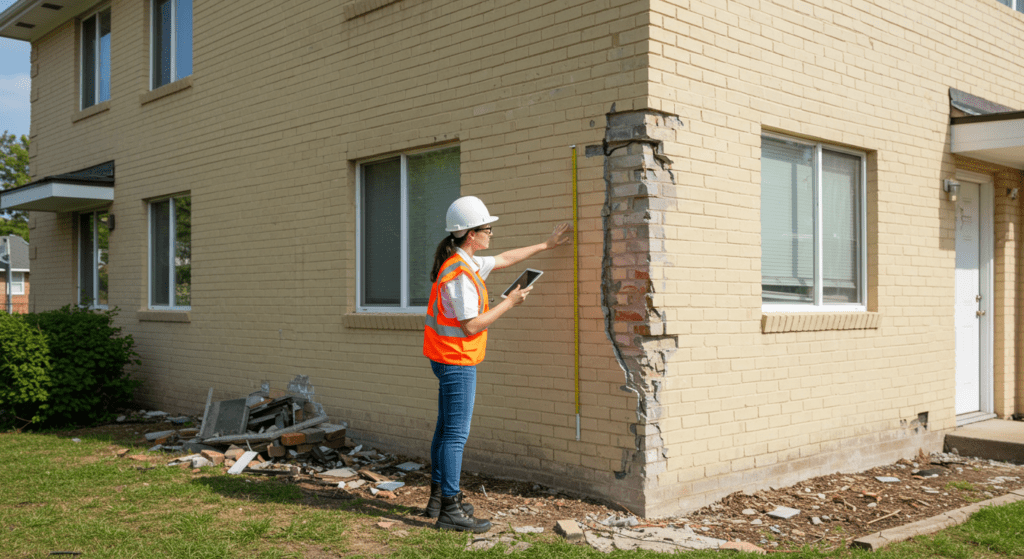- Comprehensive Guide to Apartment Building Insurance
- Why Apartment Building Insurance is Essential
- Understanding Policy Coverage and Exclusions
- Assessing Risk in Multi-Unit Properties
- How to Choose the Right Insurance Provider
- Cost Factors and Budgeting for Comprehensive Coverage
- Navigating Claims: What to Expect in an Emergency
- Legal Considerations and Compliance Requirements
- Benefits of Bundling Policies for Apartment Buildings
- Future Trends and Innovations in Apartment Building Insurance
1. Comprehensive Guide to Apartment Building Insurance
Apartment building insurance is an essential safety net for property owners. It protects your investment and helps you manage risks in a world full of uncertainties. This guide will help you understand why apartment building insurance is essential, what it covers, and how to choose the best policy for your building.

2. Why Apartment Building Insurance Is Essential
Apartment building insurance protects more than just bricks and mortar. It safeguards your investments and ensures the financial viability of your business. Natural disasters, fire outbreaks, and liability claims can cause significant financial losses. With the right insurance, these risks are taken off your shoulders. For both seasoned and first-time property owners, a comprehensive policy offers peace of mind knowing that unforeseen events won’t derail your investment plans.
Multiple residents and shared spaces increase the complexity of managing an apartment building. Insurance policies specifically designed for these properties cover both common areas and individual units. This dual protection approach limits potential financial disruptions. Without adequate coverage, you might face expenses for repairs, legal fees, or emergency evacuations—all of which can be overwhelming for your budget.
3. Understanding Policy Coverage and Exclusions
When reviewing insurance policies, it’s important to understand what is covered and what is not. A comprehensive apartment building policy typically includes protection for property damage, liability incidents, and loss of rental income. Look carefully at the endorsements and exclusions listed in your policy. Some policies may not cover damages caused by natural events like earthquakes or floods.
Clear knowledge about exclusions is key. For instance, if your policy excludes water damage caused by sewer backups, you may need to purchase additional endorsements. Comprehensive coverage does not mean every scenario is covered. Always read the fine print, ask questions, and make sure you understand what is included. This clarity can prevent future disagreements with insurers during a claim.

4. Assessing Risk in Multi-Unit Properties
Multi-unit properties come with unique challenges. Risk factors in apartment buildings include fires, water damage, vandalism, and liability concerns due to high traffic and shared amenities. Assessing risk is an essential step before purchasing insurance. Property owners should conduct regular building safety audits and update risk assessments as building codes change. These evaluations can reveal vulnerabilities that, if left unaddressed, might result in claim denials.
In the digital era, some insurance companies offer advanced tools for risk assessment. These tools use data analysis and even artificial intelligence to predict potential risks. Utilizing these modern assessment techniques will not only ensure compliance with legal requirements but also contribute to lower insurance premiums. Actively managing your risks results in a more favorable policy and can offer long-term savings.
5. How to Choose the Right Insurance Provider
Selecting the right insurance provider is as important as choosing the right policy. When evaluating insurers, look for experience in apartment building insurance and a solid track record. Ask for customer testimonials and inquire about their process for handling claims. A transparent provider that communicates clearly during a crisis is invaluable.
Consider providers that offer customizable packages tailored to your property’s specific needs. Ask if they have dedicated property management teams to provide proactive support. Additionally, the provider’s financial strength ratings are vital indicators of their ability to pay claims. Choosing a well-regarded provider will ensure that you feel supported from policy initiation to claims closure.

6. Cost Factors and Budgeting for Comprehensive Coverage
Budgeting for apartment building insurance can be challenging due to the many factors that influence cost. Premium rates are based on the building’s location, age, construction materials, safety features, and claim record. Multi-unit properties with modern fire suppression systems and security features may benefit from lower premiums. Conversely, older buildings in high-risk areas might attract higher rates.
A straightforward approach to budgeting is to conduct a thorough risk analysis. This analysis helps allocate funds appropriately while ensuring that you do not compromise on essential coverage. Insurance agents often help property owners balance cost and value. Compare multiple quotes and negotiate adjustments to the policy. Although cheaper options may save money upfront, they might lack necessary critical elements. Always seek comprehensive coverage within your budget.
7. Navigating Claims: What to Expect in an Emergency
When an emergency strikes, the claims process becomes a critical part of insurance. From filing a claim to receiving compensation, understanding what to expect can help alleviate stress during emergencies. The initial step is to notify your insurance company immediately when damage occurs. Detailed documentation of the damage, including photos and estimates, speeds up processing.
During the investigation, an adjuster determines the claim’s validity. Cooperation is key; provide all requested documentation and be available for any follow-up assessments. Regular communication with your provider can clarify uncertainties. If a claim is denied, review the reasons carefully, and consider appealing the decision. Familiarizing yourself with the claims process in advance ensures a smoother resolution and helps you get back to normal as quickly as possible.

8. Legal Considerations and Compliance Requirements
Property owners must understand that apartment building insurance goes beyond financial protection—it often includes legal and compliance requirements. Local and national regulations may dictate the minimum coverage that apartment buildings must have in case of accidents or emergencies. Failing to meet these requirements could result in hefty fines or difficulty securing tenants.
Consult a legal professional if uncertainties arise about regulatory obligations. In addition, insurance policies should align with building codes, fire safety regulations, and occupancy permits. Keeping your property compliant minimizes the risk of legal complications. Regular audits and close dialogue with your insurer reduce the chances of inadvertently falling short of legal requirements.
9. Benefits of Bundling Policies for Apartment Buildings
Bundling policies is one way to add value to your insurance investment. Many providers offer discounts for combining property, liability, and even flood insurance in a single package. This bundling can lead to considerable savings without sacrificing the quality of coverage. In some cases, bundling policies may also simplify your premium payments and reduce administrative hassles.
A bundled package often includes enhanced coverage options designed for apartment buildings. Bundled policies may cover both actual physical damages and loss of rental income in a single claim process. These comprehensive packages streamline the entire insurance experience. When comparing providers, ask about available discounts and bundled options. This check could make a significant difference in your long-term budgeting efforts.

10. Future Trends and Innovations in Apartment Building Insurance
The future of apartment building insurance is rapidly evolving. Insurers are increasingly embracing technology to better assess risk and process claims. One emerging trend is the use of smart sensors throughout buildings. These devices detect water leaks, monitor fire risks, and even track occupancy patterns. Early interventions can prevent severe damage and reduce the likelihood of extensive claims.
Innovative startups are introducing digital insurance platforms that provide a more personalized approach to coverage. These platforms analyze vast amounts of data in real time, offering dynamic premiums based on current risk assessments. As artificial intelligence and machine learning become more integrated into insurance processes, property owners can expect more efficient claims handling and customized policies tailored to individual risk profiles.

11. Conclusion
Apartment building insurance is an indispensable part of managing your property investment. Understanding its importance, knowing what is covered, and keeping up with the latest trends can protect both your assets and your tenants. Regular risk assessments and proactive property management help lower premiums and minimize claim complications. By choosing the right insurance provider, budgeting wisely, understanding the claims process, and staying compliant with legal requirements, you set the stage for long-term success.
Each apartment building is unique, and comprehensive insurance helps tailor protection to your specific risks. Whether you’re combining policies for cost efficiency or leveraging the latest technology, the key remains the same: protect your investment to secure a stable future. As the industry continues to evolve, staying informed is the best defense against future uncertainties. This thorough guide aims to empower property owners to make well-informed decisions and enjoy peace of mind in the face of unpredictable events.
